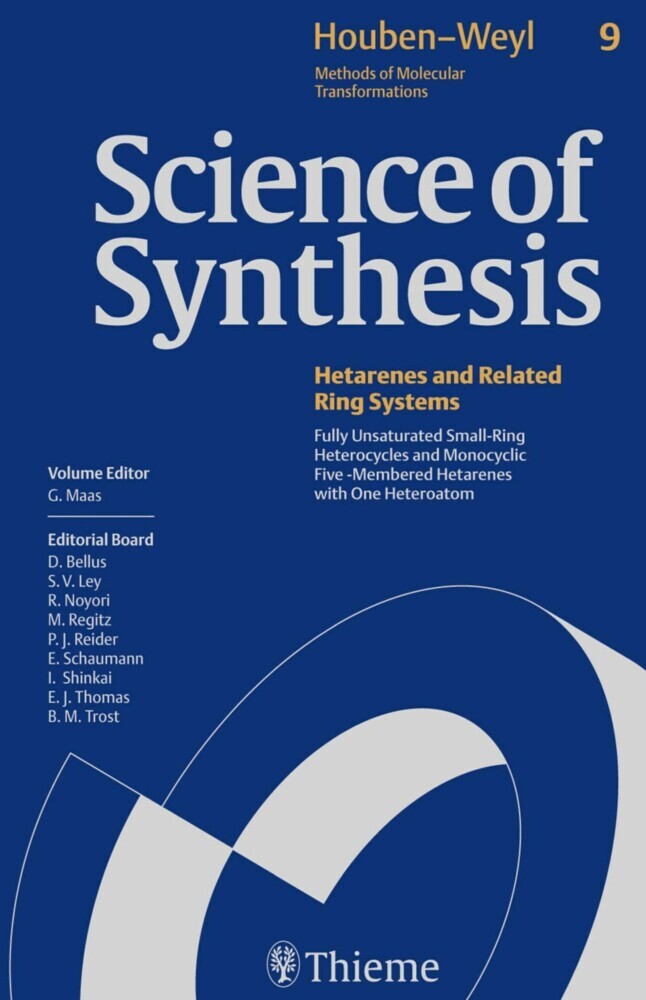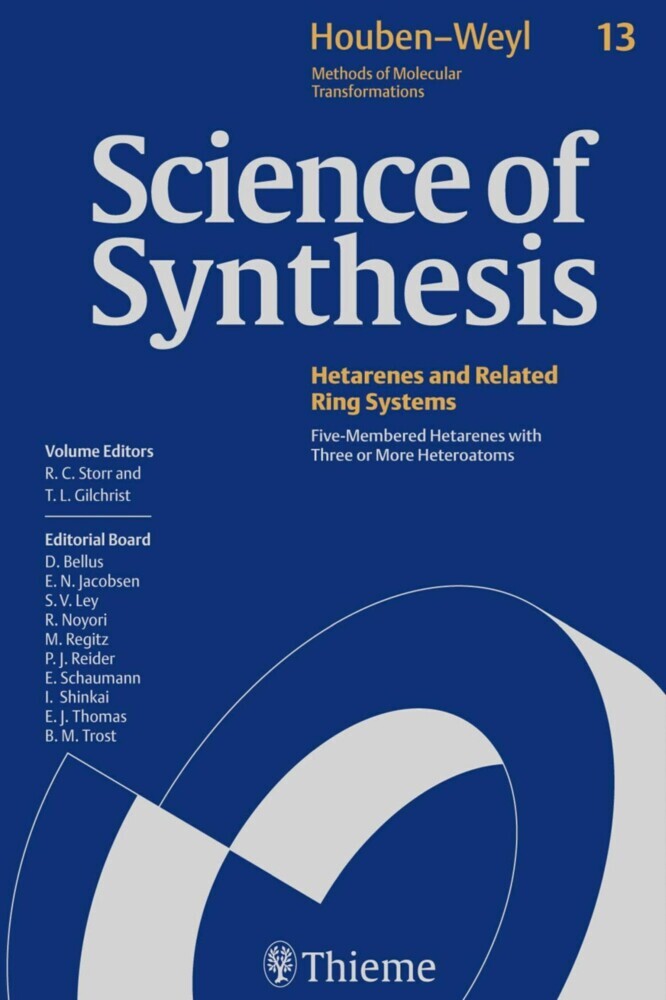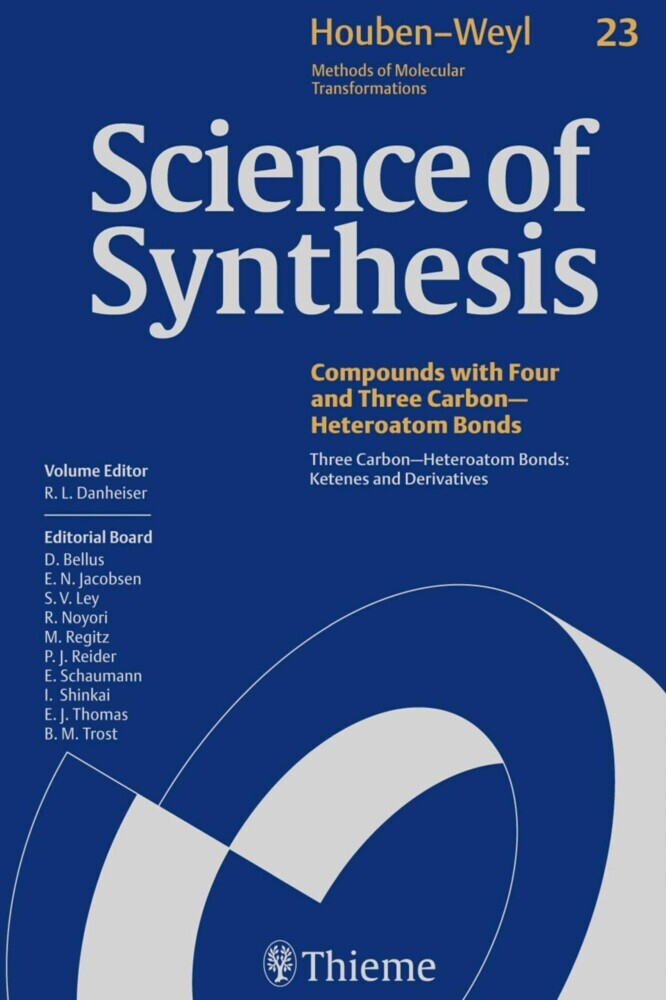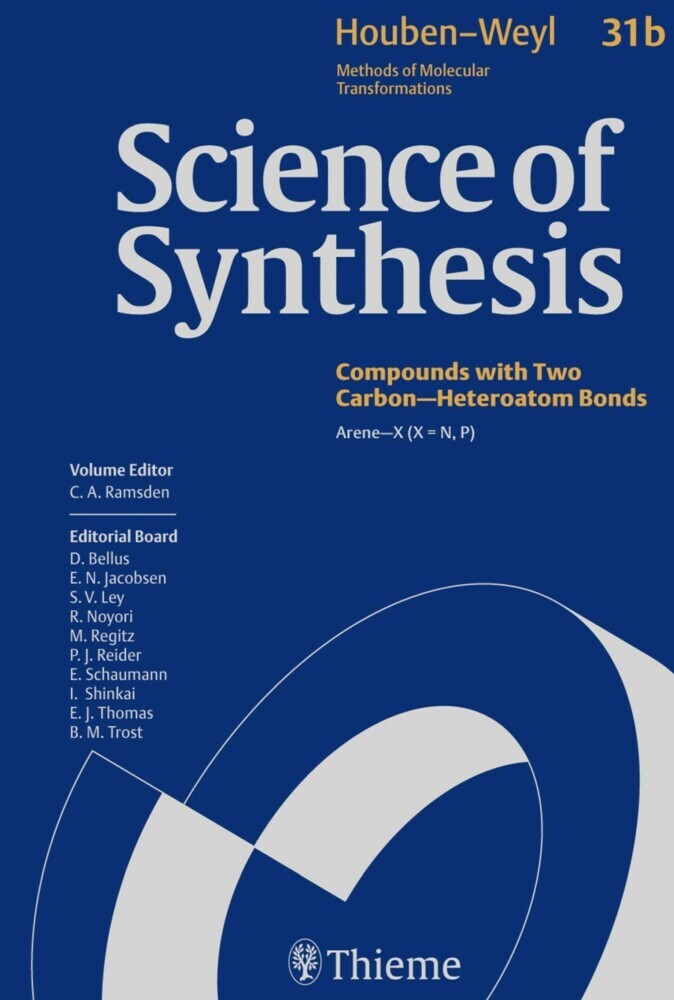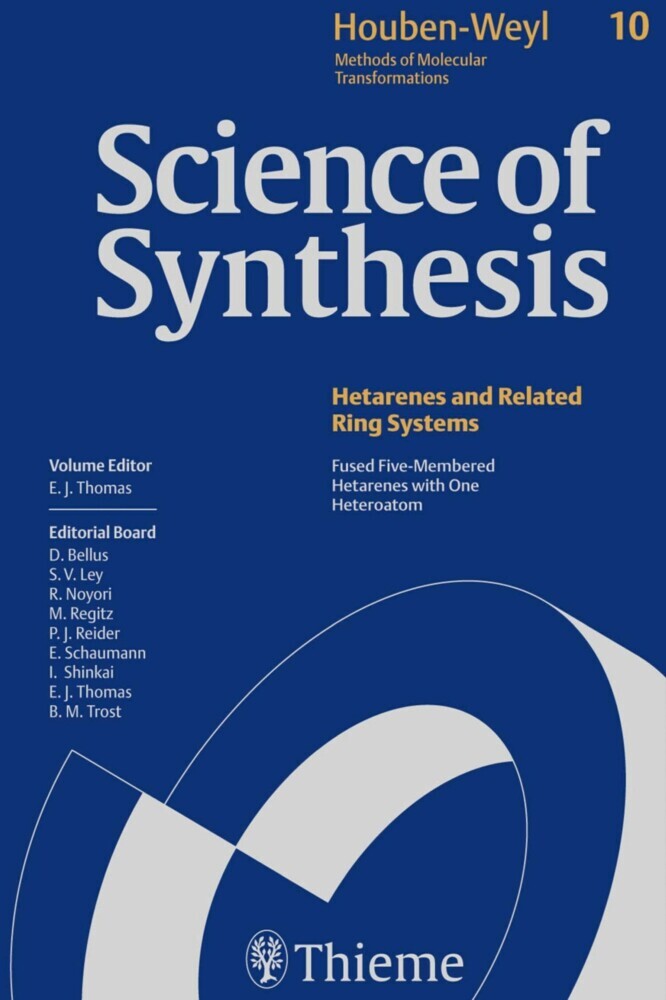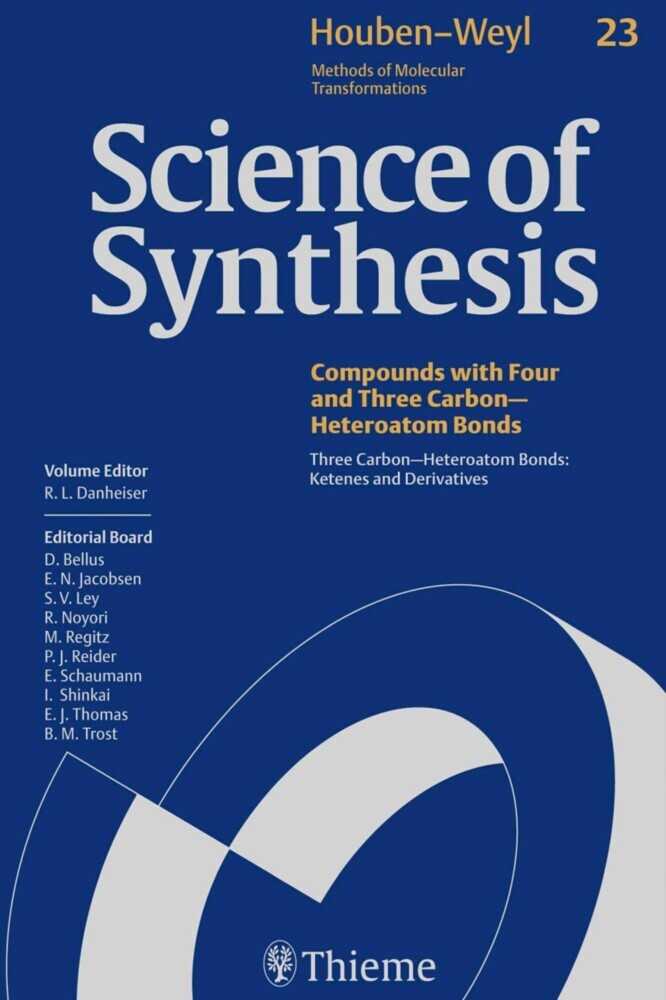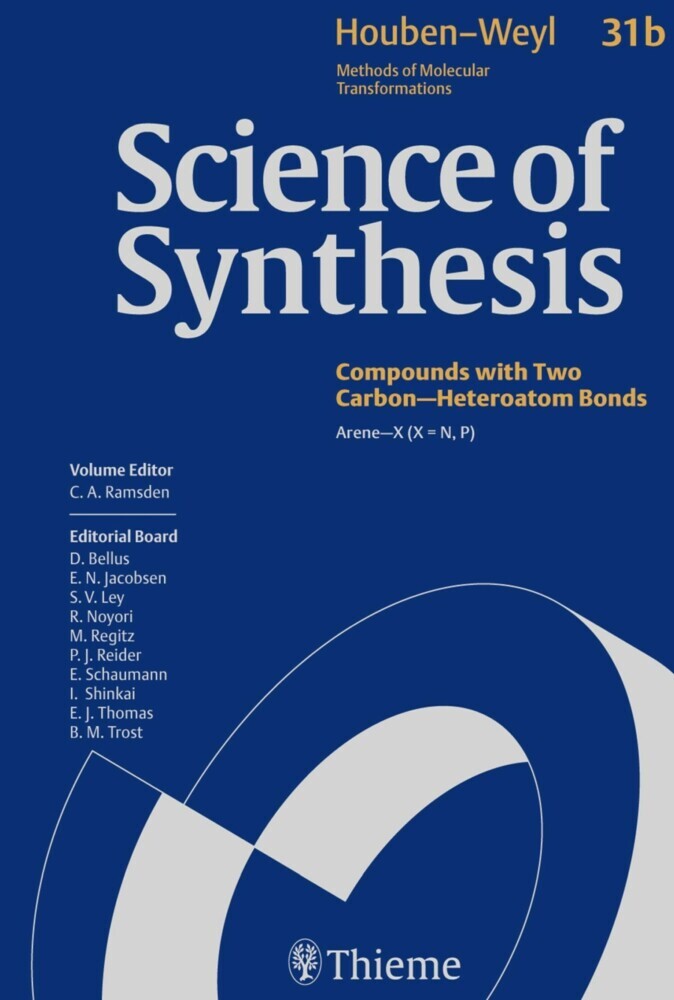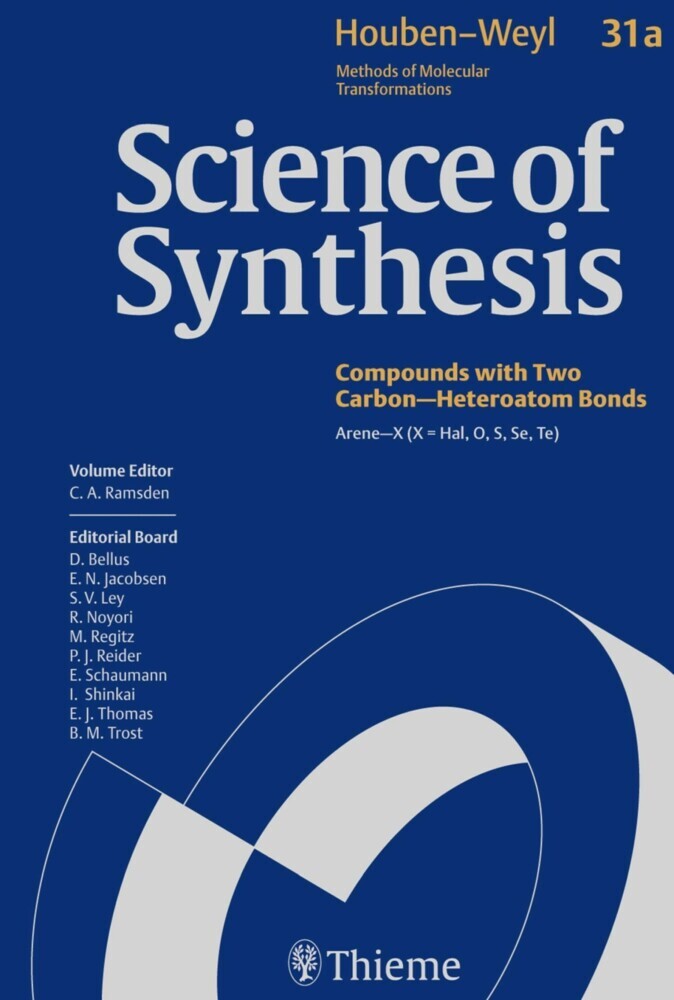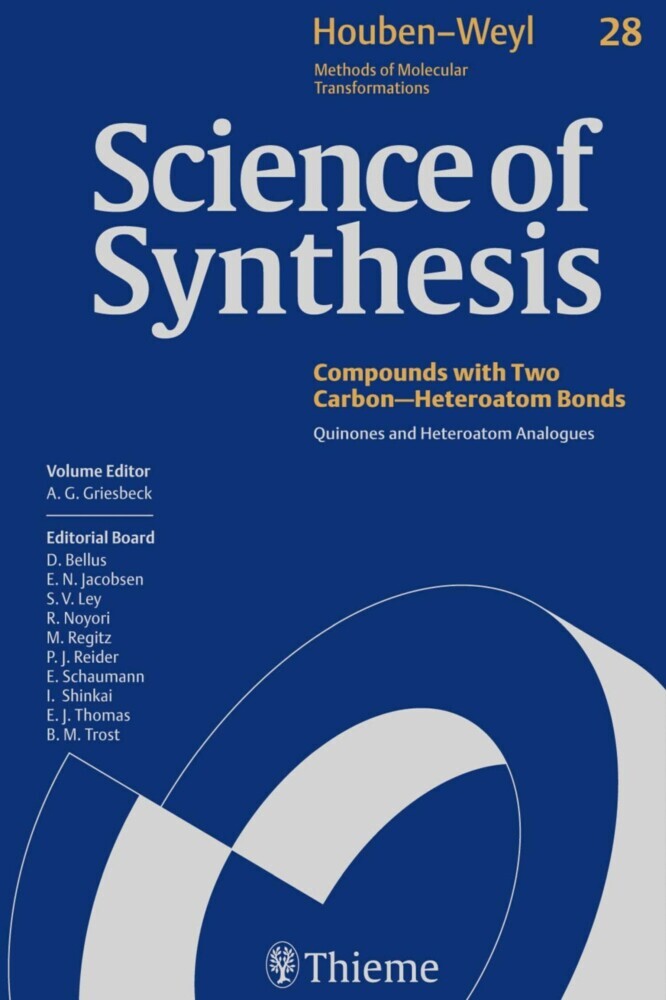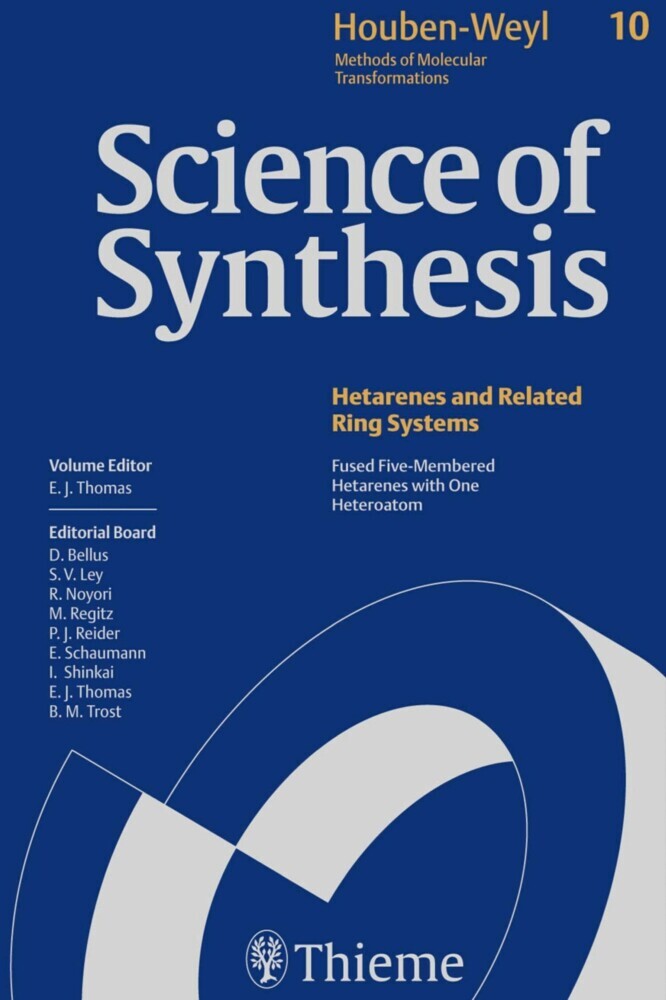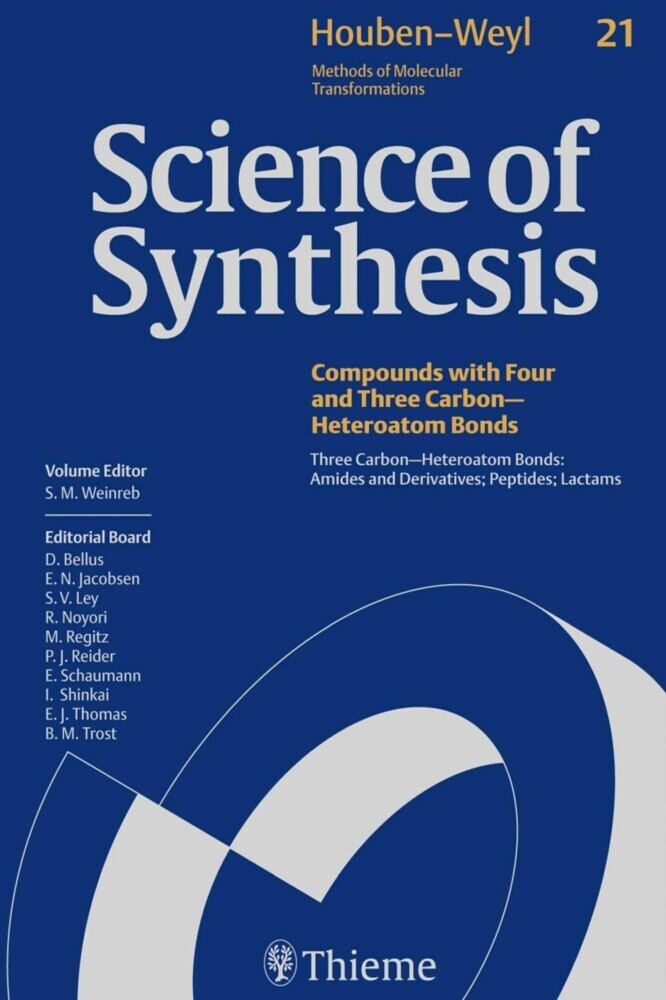Science of Synthesis: Houben-Weyl Methods of Molecular Transformations Vol. 9
Science of Synthesis: Houben-Weyl Methods of Molecular Transformations Vol. 9
Science of Synthesis: Houben-Weyl Methods of Molecular Transformations is the entirely new edition of the acclaimed reference series, Houben-Weyl, the standard synthetic chemistry resource since 1909. This new edition is published in English and will comprise of 48 volumes published between the years 2000 and 2008.
Science of Synthesis is a quality reference work developed by a highly esteemed editorial board to provide a comprehensive and critical selection of reliable organic and organometallic synthetic methods. Science of Synthesis is designed to be the first point of reference when searching for a synthesis strategy.
This volume covers the synthesis of three- and four-membered heterocycles with maximum unsaturation and of five-membered hetarenes with one oxygen, sulfur, selenium, tellurium, nitrogen, or phosphorus atom. Maximum unsaturation means that the ring does not contain either an sp3-hybridized carbon atom or a heteroatom incapable of pi-conjugation. Some compounds which are derivatives of such ring systems but no longer feature maximum unsaturation are also included.
For full information on the Science of Synthesis series, visit the Science of Synthesis Homepage.
Series Editors: D. Bellus, S. V. Ley, R. Noyori, M. Regitz, E. Schaumann, I. Shinkai, E. J. Thomas, B. M. Trost, P. J. Reider
Gerhard Maas
1;Science of Synthesis - Volume 9: Fully Unsaturated Small-Ring Heterocycles and Monocyclic Five-Membered Hetarenes with One Heteroatom;1 1.1;Title page;3 1.2;Imprint;5 1.3;Preface;6 1.4;Volume Editor's Preface;8 1.5;Overview;10 1.6;Table of Contents;12 1.7;Introduction;34 1.8;9.1 Product Class 1: Oxirenes;52 1.8.1;9.1.1 Synthesis by Ring-Closure Reactions;54 1.8.1.1;9.1.1.1 By Formation of Two O--C Bonds;54 1.8.1.1.1;9.1.1.1.1 Fragments C--C and O;54 1.8.1.1.1.1;9.1.1.1.1.1 Method 1: Oxidation of Alkynes;54 1.8.1.1.1.1.1;9.1.1.1.1.1.1 Variation 1: With Peroxy Acids;54 1.8.1.1.1.1.2;9.1.1.1.1.1.2 Variation 2: With Dioxiranes;56 1.8.1.1.1.1.3;9.1.1.1.1.1.3 Variation 3: With Atomic and Molecular Oxygen;58 1.8.1.1.1.1.4;9.1.1.1.1.1.4 Variation 4: Enzymatic Oxidation;59 1.8.1.2;9.1.1.2 By Formation of One O--C Bond;60 1.8.1.2.1;9.1.1.2.1 Fragment O--C--C;60 1.8.1.2.1.1;9.1.1.2.1.1 Method 1: Isomerization of a-Oxo Carbenes;60 1.8.1.2.1.2;9.1.1.2.1.2 Method 2: Isomerization of Ketene;67 1.8.2;9.1.2 Synthesis by Ring Transformation;68 1.8.2.1;9.1.2.1 Method 1: From Larger Heterocycles by Extrusion Reactions;68 1.8.3;9.1.3 Aromatization;69 1.8.3.1;9.1.3.1 Method 1: Isomerization of Oxiranylidenes;69 1.8.3.2;9.1.3.2 Method 2: ß-Elimination Reactions of Oxiranes;70 1.8.3.3;9.1.3.3 Method 3: Cycloreversion Reactions of Fused Oxiranes;71 1.9;9.2 Product Class 2: Thiirenes and Their Derivatives;76 1.9.1;9.2.1 Product Subclass 1: Thiirenes;77 1.9.1.1;9.2.1.1 Synthesis by Ring Transformation;79 1.9.1.1.1;9.2.1.1.1 Method 1: From 1,2,3-Thiadiazoles;79 1.9.1.1.1.1;9.2.1.1.1.1 Variation 1: Photochemical Decomposition in Matrixes;79 1.9.1.1.1.2;9.2.1.1.1.2 Variation 2: Photochemical Decomposition in Solution;80 1.9.2;9.2.2 Product Subclass 2: Thiirene 1,1-Dioxides;81 1.9.2.1;9.2.2.1 Synthesis by Ring-Closure Reactions;82 1.9.2.1.1;9.2.2.1.1 Method 1: From a,a'-Dihalo-Substituted Sulfones;82 1.9.2.2;9.2.2.2 Aromatization;83 1.9.2.2.1;9.2.2.2.1 Method 1: Dehydrohalogenation of 2-Halothiiranes;83 1.9.3;9.2.3 Product Subclass 3: Thiirene 1-Oxides;85 1.9.3.1;9.2.3.1 Synthesis by Ring-Closure Reactions;86 1.9.3.1.1;9.2.3.1.1 Method 1: From a,a'-Dihalo-Substituted Sulfoxides;86 1.9.3.2;9.2.3.2 Aromatization;87 1.9.3.2.1;9.2.3.2.1 Method 1: Fused Thiirene 1-Oxides from Diels--Alder Reactions of 2,3-Bis(alkylidene)thiirane 1-Oxides;87 1.9.4;9.2.4 Product Subclass 4: Thiirenium Ions;88 1.9.4.1;9.2.4.1 Synthesis by Ring-Closure Reactions;89 1.9.4.1.1;9.2.4.1.1 Method 1: Addition of a Sulfonium Ion to Alkynes;89 1.9.4.1.2;9.2.4.1.2 Method 2: From 1-Halo-2-sulfanylethenes;90 1.10;9.3 Product Class 3: Selenirenes;94 1.10.1;9.3.1 Synthesis by Ring Transformation;94 1.10.1.1;9.3.1.1 Method 1: From 1,2,3-Selenadiazoles;94 1.10.1.1.1;9.3.1.1.1 Variation 1: Photochemical Decomposition in a Matrix;94 1.10.1.1.2;9.3.1.1.2 Variation 2: Photochemical Decomposition in Solution;95 1.11;9.4 Product Class 4: Tellurirenes;98 1.12;9.5 Product Class 5: 1H-Azirines;100 1.12.1;9.5.1 Synthesis by Ring-Closure Reactions;101 1.12.1.1;9.5.1.1 By Formation of Two N--C Bonds;101 1.12.1.1.1;9.5.1.1.1 Fragments C--C and N;101 1.12.1.1.1.1;9.5.1.1.1.1 Method 1: Reactions of Alkynes with Nitrenes or Nitrene Equivalents;101 1.12.1.1.1.1.1;9.5.1.1.1.1.1 Variation 1: Generation of Nitrene (NH) from Hydrazoic Acid;101 1.12.1.1.1.1.2;9.5.1.1.1.1.2 Variation 2: Generation of Nitrenes from Organic Azides;101 1.12.1.1.1.1.3;9.5.1.1.1.1.3 Variation 3: Oxidation of N-Aminophthalimides in the Presence of Alkynes;102 1.12.1.2;9.5.1.2 By Formation of One N--C Bond;103 1.12.1.2.1;9.5.1.2.1 Fragment N--C--C;103 1.12.1.2.1.1;9.5.1.2.1.1 Method 1: Cyclization of a-Imino Carbenes;103 1.12.1.2.1.1.1;9.5.1.2.1.1.1 Variation 1: Generation of a-Imino Carbenes from 1H-1,2,3-Triazoles;104 1.12.1.2.1.1.2;9.5.1.2.1.1.2 Variation 2: Generation of a-Imino Carbenes from a-Diazo Imines;107 1.12.1.2.1.1.3;9.5.1.2.1.1.3 Variation 3: Generation of Cyclic a-Imin
| ISBN | 9783131718112 |
|---|---|
| Artikelnummer | 9783131718112 |
| Medientyp | E-Book - PDF |
| Copyrightjahr | 2014 |
| Verlag | Georg Thieme Verlag KG |
| Umfang | 664 Seiten |
| Sprache | Englisch |
| Kopierschutz | Digitales Wasserzeichen |

